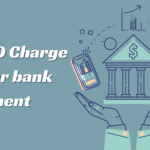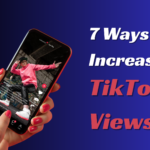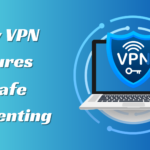A Complete Guideline on Virtual Events for Event Producers
- 1 Virtual Event:
- 2 Why A Need for Virtual Event Arise?
- 2.1 Accessible to Everyone:
- 2.2 Budget Issue:
- 2.3 Safe to Arrange:
- 2.4 Risk of A Pandemic:
- 2.5 Fundamentals of Virtual Event:
- 2.6 Difference between in-person and Virtual Events:
- 2.7 Necessary Elements of a Virtual Event:
- 3 The Process of Hosting A Virtual Event:
Things are not going our way, and the pandemic is constantly getting more muscular. But a question here is if you are arranging a live multi-day conference, how can you ensure that the audience attends your virtual event, and how will you keep them engaged?
When we talk about in-person Live Event Production, you know how to do that, but virtual events are a different task and must be handled differently. You need to promote the event effectively, engage the audience, create memorable moments for the audience, and prove the event’s success.
The difference between an in-person and virtual event is only the presence or absence of an audience and a slightly different technique for engaging an audience and making the event successful. You have to create an experience that extends well beyond a computer screen.
Virtual Event:
You might have attended a webinar, watched an online workout video, or joined a meeting through a link by sitting at your desk. These are all examples of virtual events.
Why A Need for Virtual Event Arise?
The purpose of a virtual live event is the same as an in-person live event. It is also arranged to convey the message of your event.
Possible Reasons Behind Hosting A Virtual Event:
Accessible to Everyone:
The natural fruit of an in-person event is accessible only to those who physically attend the event. Still, a virtual event is accessible to everyone, and all can similarly experience it.
Budget Issue:
Your organization has a limited budget and needs to cut costs. If you cannot afford the travelling expenses of your speakers or guests, a virtual event is ideal because they can attend without being in person.
Safe to Arrange:
Any virtual event does not concern weather conditions. Even in rain or sunlight, you can comfortably arrange it.
Risk of A Pandemic:
Nowadays, the primary reason for virtual events is that people must keep social distancing, and things are getting bad again. So, virtual events are the best solution for it.
Fundamentals of Virtual Event:
Marketing virtual events is needed to develop people’s interest in it. The keynotes you use and the power of your content can only keep your audience engaged. Being alone at the place of hosting a virtual event doesn’t mean that you don’t have to engage an audience like an in-person event.
Multiple people are listening to you, so you have to engage them. A bad virtual event can cause the same loss as a bad in-person event. The only standard measure of the success of your audience engagement is the amount you earned from the event.
Difference between in-person and Virtual Events:
Virtual events can’t be pleasure destinations for the audience, so they have to rely on content. Marketers need to promote the content to the target audience segment. Engaging the audience through a virtual event is challenging because it requires creativity and the use of different apps to create a differentiated experience.
The bitter reality is that face-to-face engagement is not possible. If you rely only on technology, it is challenging to convince the audience because no other method can present face-to-face interaction. The only things that can make an event successful are careful planning, great ideas, and agility.
Necessary Elements of a Virtual Event:
Virtual events are made up of different elements. Like other events, they also include in-person and hybrid elements. The video quality of an event and a strong internet connection are the essential factors of a successful event. Another important thing is the site from which you stream your live event. The site should be according to the content of your event.
The essential elements of a live virtual event are:
- Event website
- Event integration
- Content for live presentation
- Live audio or video
- Live polls
- Note-taking or slides
- Recorded content
- Interactive video conferencing
- Feedback surveys
The Process of Hosting A Virtual Event:
Virtual events depend on technology, and the audience’s attendance is not possible without technology. Let’s discuss some essential technologies we use to arrange a virtual event.
Event Website:
This tool is essential for promoting the event and forces the audience to register.
Registration:
This is an online process through which you can gather attendees’ information, and they can easily make payments for participating in your event.
Email Marketing:
This is also an essential tool for driving traffic to your event. Engage your attendees before the event and make sure they remember the date. After the event, send them feedback surveys to get a clear idea of their satisfaction level.
Mobile Event Apps:
People usually love to attend events that they can access through mobile. So, would bedding your app before the event be a plus point? An app will increase attendance considerably.
Feedback for The Event:
At in-person events, it is easy to judge the event’s success by the expressions of an audience. Still, in virtual events, you need a feedback survey to determine your event’s success and get suggestions for improving your next event.
Virtual live event production is as vital as in-person production. This article aims to give you an idea of a virtual event because it has now become a trend due to a ban on in-person gatherings. In 2020, when conditions were somehow expected, the trend of the hybrid event was at its peak.
But now, again, the pandemic has almost restricted all activities. A virtual event is the only way to reach your audience. Those who haven’t moved towards virtual events need to realize their importance.

















